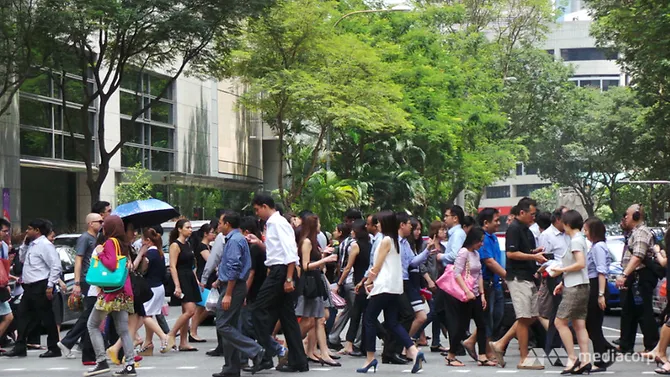Employers more cautious in hiring as Singapore economy slows, says MAS
30 October, 2019

Employers here have turned cautious when it comes to hiring as the Singapore economy hits the brakes in face of global headwinds, said the Monetary Authority of Singapore (MAS) on Wednesday (Oct 30).
It expects the labour market to soften moving forward as the slowdown in growth dampens hiring, although the impact could be uneven across industries, the central bank added in its latest half-yearly macroeconomic review.
For the first half of 2019, net employment remained firm at 18,900. This was due to hiring in the modern services and domestic-oriented clusters, which have seen growth holding up thus far, more than offsetting job losses in the trade-related cluster.
However amid the continued economic slowdown, MAS noted that “hiring sentiment has become more restrained”.
The resident unemployment rate had edged up to 3.1 per cent in the second quarter, it said in its report.
There were also fewer job vacancies than unemployed persons for the first time since December 2017 – a significant fall that “signals hesitant hiring intentions”, the central bank wrote.
And while retrenchments remained low in the second quarter at 2,320, the re-entry rate among retrenched residents fell to 60 per cent, which was the lowest rate in at least four years.
Nevertheless, employers have thus far opted to retain existing workers.
“In response to elevated uncertainty in the business outlook, firms tend to place employees on a short work-week or temporarily lay them off to reduce labour costs, and only opt to retrench when the deterioration in outlook becomes more apparent,” according to the report.
MAS said the number of employees being placed on short work-weeks or temporary layoffs has gone up to 1,900 in the first half of this year, compared with 900 in the second half of 2018.
This suggests “some reaction to the slowdown in activity among firms, although still much milder than that during the global financial crisis”, it elaborated.
MAS also said that the growth slowdown has thus far been absorbed by companies, rather than passed on to the labour market.
This can be seen by productivity falling 0.9 per cent year-on-year in the first half of 2019, reversing the gains in the previous year, largely due to the trade-related cluster.
From the income perspective, growth of gross operating surplus dropped to around zero in the first six months, while that of employees’ compensation remained relatively stable at 3.5 per cent.
This also shows that the brunt of the slowdown in growth was borne by firms through lower profits, rather than employee compensation, the central bank said.
Wage flexibility also “provides some buffer for companies to adjust costs rather than reduce headcount”.
Reflecting a reduction in firms’ marginal wage costs, the report pointed to a drop to 2.8 per cent year-on-year in resident wage growth for the first half of the year, from 3.5 per cent in 2018.
LABOUR DEMAND TO MODERATE, WAGE GROWTH TO EASE
Looking ahead, MAS said the economic slowdown is expected to dampen hiring, although unevenly across industries.
“Since employment responds to economic activity with a lag, labour demand could moderate in the near term,” it added.
The trade-related cluster – especially the electronics and precision engineering industries within manufacturing, as well as in wholesale trade – will likely continue trimming headcount given the persistent trade tensions, global electronics downturn and lacklustre demand.
But job creation in the modern services cluster should remain relatively firm, provided that business sentiment does not deteriorate significantly, while hiring in the domestic-oriented cluster will be supported by construction activities.
Seasonal patterns will also provide some uplift to the modern services and domestic?oriented services in the third and fourth quarter, respectively.
But as the labour market continues to soften and amid declining profitability, wage growth will likely ease in 2019 and into 2020, MAS said. This is especially the case for firms with more flexible compensation arrangements.
Turning to inflation, the central bank said external and domestic cost pressures are not likely to rise further amid a subdued economic environment. The pass-through to consumer prices should be limited.
“Inflationary pressures are expected to remain muted in the coming quarters.”
For 2019, core inflation, which excludes accommodation and private road transport expenses, is expected to come in at the lower end of the 1 to 2 per cent range, while headline inflation is projected to be around 0.5 per cent.
MAS forecasts that both measures of inflation will average between 0.5 and 1.5 per cent next year. 2
Source:
TAG(s):
